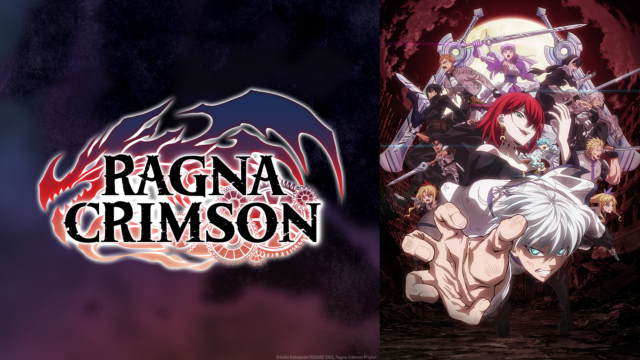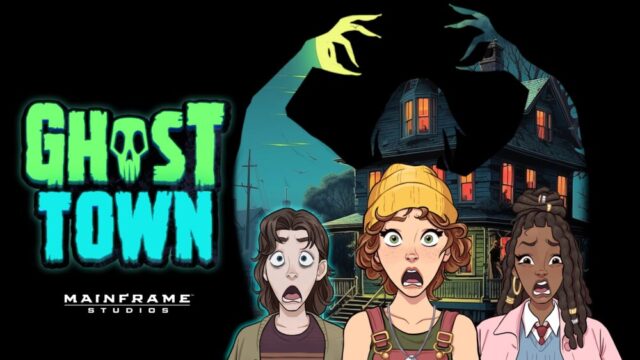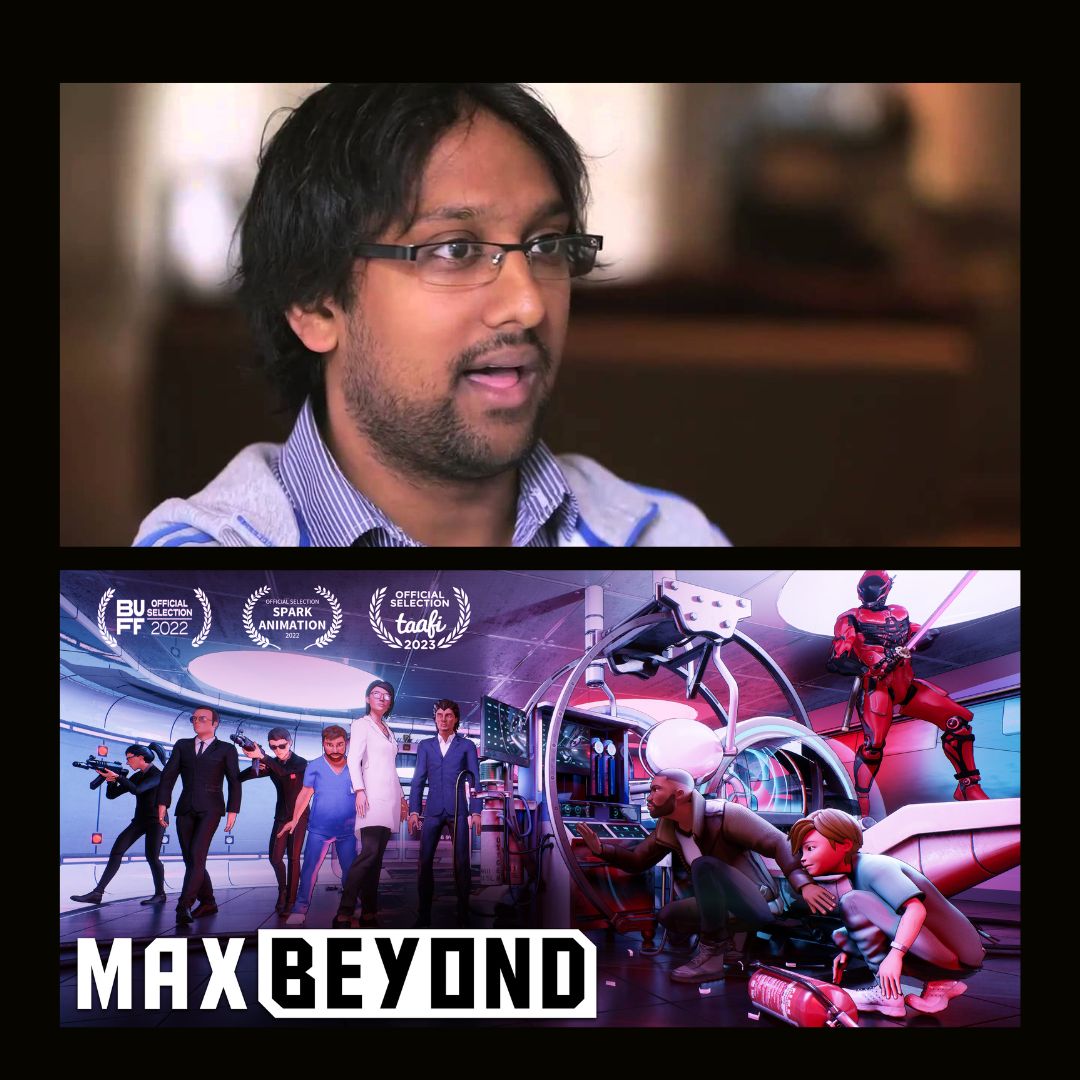English Dub Season Review: FLCL Alternative
Kana, it’s time to lay it on the line. What does FLCL Alternative mean?
(Jump)
And just like that, another FLCL season’s come and gone. All the speculation and worry and excitement…and it’s over leaving more questions than answers, just like we probably expected it to. Alternative was pitched as “handing the keys to a totally different team of creators to redefine the meaning of a sequel”. And apparently we’ve come to learn that redefining a sequel is making it a prequel. So, in a way, we’re sort of back to where we started. Both chronologically (despite the issues there but I’ll get to that), but also watching something that, to many of us, was such a spark of creative and emotional energy fly away again after throwing us for such an intense loop. We may not get anything like it ever again. And while that might be a good thing, in the long run, it still stings a bit seeing it take its leave, along with the irritating hope that it might one day come back. So, let’s take one last look at Alternative on its own before we gas up the Vespa one more time for its one way trip to Mars.
Themes, Tone, Balance, and Music:
This was probably the season with the biggest sense of scope and stakes, involving the whole world from the start. While previous seasons made clear that the threat of the giant irons flattening everything was a global issue, it usually took a back seat to the more personal conflicts and closer issues while the fight for the fate of the planet was either a backdrop or resolved pretty quickly so as not to distract from the aforementioned personal stuff between characters. Heck, the important matters never reached beyond the borders of Mabase or wherever Progressive takes place, making the respective towns feel like their own little worlds.
In Alternative, we begin the season with press conferences about shuttles taking off to save the rich and powerful from what may be a dying planet that is slowly heating up while the main kids worry about what kind of future they can have…okay, the symbolism’s about as subtle as a sledgehammer. Actually, I don’t even know if you can call it symbolism when it’s practically what’s happening in real life anyway. But that aside, it is the first time we really get a sense of what the world is really like outside the place where the plot is happening, which is pretty different from what either season before it has done. Though I guess it is a prequel explains some of that, but I’m getting ahead of myself.
This season was also more willing to play around with ideas and concepts of the original that seemed set in stone by Progressive. For example, it seemed like the only things one could pull out of a NO Portal in someone’s head were giant robots and rare guitars with the occasional giant red pirate bird. Alternative breaks this rule pretty quickly, showing that stuff like cars and even toy guns are more than capable of manifesting, along with the possibility that it may be connected to whatever’s on the portal owner’s mind (still no word on where that stuff comes from, sadly). On top of that, there’s more than one type of Canti robot out there (which I guess is expected since he was supposed to be a mook who went rogue), as well as types other than his that can absorb humans for greater power. And the cherry on top, NO Portals that can transport people to other planets. Plenty of stuff to stoke the creative flames or cause more internet arguments to be sure, but then again neither of those things ever needed help getting started.
While not as strongly layered as the original’s main theme of finding maturity by accepting where you are in life, Alternative does have a theme of its own that is opposed to that: the willingness to change and move forward. The placement of the protagonists in high school, which is a big transitional period for people at that point in life, is telling of how that theme plays into things. It’s no surprise that it begins with the teacher telling them that they need to start thinking about what careers they want, put alongside signs that people are leaving the planet that can’t support them. It’s a bit of a hyperbole, but humans leaving their home planet for somewhere else that they’ll try to make work does line up somewhat with leaving home to live on your own (or so I’m told…damn housing prices).
Alternative also had a lot more of that “Gainax” feeling, for lack of a better term, than Progressive. Besides the obvious references towards the end, there was an apparent sense of that adolescent spirit standing strong through soul-crushing adversity at certain points that really rang true as trying to harken back to true blue Gainax works like Gun/Diebuster, Gurren Lagann, and the original FLCL. It’s a feeling I never really thought I’d feel in modern anime now that Gainax itself has kinda become a shell of its former self, and I’m glad I got what may be my last taste of it.
On top of that, while Progressive often had strange imagery flailing about with no clear meaning to tether it, Alternative did manage to make its characters fleshed out enough to have meaningful moments between them. Though conversely, the expected weirdness was kinda minimized. The third episode didn’t even bother to have a giant robot battle which, despite the story itself being legitimately solid, made it stand out and not in the best way. It almost felt like these two components of “genuine adolescent emotional development” and “corresponding ridiculous action” got split amongst the teams of Progressive and Alternative but never quite met all the way on either.
It’s also not common for a single band being so closely associated with an anime’s cultural identity, but the Pillows are certainly that for FLCL. And while that’s certainly still the case here, the placement of some of their songs throughout this and Progressive was pretty questionable at times. The tracks they pulled from the original season would play at moments that seemed to reach a bit too much to make a connection between scenes, or sometimes to almost ironic effect. The new tracks at least set these seasons apart from the original, but they certainly didn’t stand out nearly as much as background songs like Hybrid Rainbow or Sleepy Head. I wouldn’t begin to question the band’s artistic cred, but I WOULD begin to question that the studio may have been scraping their discography for stuff they could fit in this new set of seasons. Still, they never sounded BAD at least, though one scene from the end of Alternative did make me wonder how that scene was planned to have sung music behind it while characters were also singing a completely different song.
Characters:
Kana:
Like how the themes of this season were sort of the opposite of the original, it was more apparent from the start that Kana was almost a bizarro Naota in some ways. While he sought being grown up due to poor role models, Kana was more than fine remaining childish in her stable family and society. This made her more typical a protagonist among the three FLCL has had, which oddly enough made her stranger. Her willingness to get involved in her friends’ problems showed a kind of compassion and loyalty, though it ended up having her not focused on as much for the first half of the season. Even when she gets focus in the fourth episode, it’s mainly to settle her crush with a weakly written guy, but that at least gives us some insight on an aspect of her life that seemed to have come from things around her made her feel, but not something that came from her own mind.
But beneath that overzealous yearning to help was someone who simply wanted her life to remain how it’s been, despite the ever-growing sense that it not only couldn’t, it may have never been as she saw it. This mainly comes to the forefront in Episode 5, when it turns out Pets, one of her closest friends, has many parts of her life Kana never knew on top of a deep seeded resentment she’s never been able to admit but lets out just before leaving suddenly. She then has to carry on with her life…briefly, before she must then protect the earth from an alien appliance invasion. With Haruko’s pushing, she’s able to admit how much of her actions were coming from just what she thought other people wanted from her, which is enough to trigger her NO powers and save her and those around her.
Possibly. Maybe. I’m not sure. In her last scene, she’s back to her regular life minus one of her friends and they might be on Mars. There’s no sign of her change in behavior to parallel Naota’s, so it’s really hard to say for certain how much of this development really stuck, nor any recognition that she probably just saved who knows how many people from being crushed on Earth. OR much confirming they are indeed on Mars if that is the case. In the end, Kana’s character has a lot of good stuff going for her but seems to fizzle out at the end despite a notably strong climax. Stuff to mull over on the forums for the next few decades, I suppose.
Kanda:
Yeah, I know, I was disappointed he wasn’t and older Naota too. What he does manage to be is kinda the only other character in the cast with a season-long character arc, so he’s earned the “Season Review Character Analysis” spot and that’s worth something. There are obvious similarities between him and Amarao from the original season, mostly in that he’s a government agent who has a history with Haruko (though luckily without any last minute reveals of him being the guy’s grandfather or something, thank god). Said history is murky aside from one flashback, but his predicament is clear long before that. He’s a depressed middle-aged man who can’t count on anyone, even his own noodles. He’s the only one left in his department since there isn’t even enough room in the budget for a Kitsurubami-like henchman. What he gets instead is the Prime Minister of Japan possibly hitting on him and hounding for stuff about the invading aliens that he can’t tell her because his department’s been slashed…possibly by her. He used to be someone with high hopes and ideals that now has a front seat to the end of the world and can’t do a damn thing about it.
This might be reaching on my part, but part of me wonders if he’s meant to represent the fans of the original series who watched as it aired (or came out on DVD in Japan), considering teenagers and young adults from then would be far older now. I mostly say that due to his constant exasperation with Haruko, someone who initially made his life interesting and thrilling but now is only a harbinger of things becoming messier and harder for him when life is only getting worse. Yet despite that, when the government effectively leaves him and the rest of the planet to die, he manages to pull together a plan with her and save people…maybe. Again, it’s kind of unclear how that plan ends up after the big explosion, especially since he’s never seen again after that. But even though is ultimate fate is ambiguous, I appreciate what he brought to the table. I would have liked him and Kana to get more scenes together before the end, but I’d like to think they kept in touch on Mars.
Pets:
Pets is certainly not someone I expected to put here based on the first two-thirds of this season, where she was basically the stoic and snarky friend out of Kana’s whole group and that was the beginning and end of her personality. Then Episode 5 comes along and shows she’s had feelings that (after several rewatches of each episode I can assure you) were not established in the slightest before now. Given that these six episodes were written and planned together, I imagine that they were in the writers’ minds when putting them all together and there’s also the likely possibility that they mainly came out of the sudden emotional moment that was the end of the fifth episode, but it still feels like a sucker punch. And even knowing that it’s meant to make us re-examine Kana’s role and behavior in previous episodes, it really doesn’t manage that as well as it may want.
What I will say in favor of Pets’ execution is the sudden feeling of loss when having a falling out with a friend, especially when that friend is about to move or just disappears. While I felt her absence in the final episode was a little overblown, I’ll admit it did make sense for how blindsided Kana felt from the previous episode. It’s unfortunate, but sometimes seemingly iron-clad bonds can break or vanish when we least expect, forcing us to make a choice to sulk or move on. Pets’ decision to leave with her parents to Mars, for better or worse, shows her commitment to moving on. She may not even hate Kana as much as she says, given her later obsession of trading things from her and their other friends to remember them by, but she’s leaving them all behind and made peace with that. It’s a sign that Kana should also move on, which she does as well while also holding onto that same pain of loss.
Haruko:
Given that this is supposedly meant to be sort of a proto-Haruko from the one we know in FLCL Classic, it’s hard to really pin down how to talk about her. She’s not really driven by finding her giant pirate bird ex-boyfriend this time, nor having a literal split personality, but does seem interested in observing Kana’s use of her NO powers. Her ways of going about that are…mixed in how useful they are. One week she’s making out with Kana’s friend’s boyfriend to make Kana freak out, the next she’s flirting with Kana’s own crush to get a reaction out of her but then seems fine when there isn’t, and in between that she’s just wandering around a local fashion show like a mental patient.
Aside from her usual stint as a sexual predator to underage boys, she’s almost been defanged. It strikes me as similar to how the Dragon Ball franchise is currently treating Bardock, Goku’s biological father. He’s known for being an asshole space pirate, but that made him interesting, and trying to give him moral obligations to save people he has no reason to care about only makes him less interesting and unique. Similarly, Haruko seemingly okay with saving the Earth in this finale is certainly convenient, but also seems out of character, as is her seemingly wanting to teach Kana lessons about maturity, which she sort of did with Naota but only if they piggybacked off her own motives. By the end, she has her signature yellow Vespa back…or has no gotten it for the first time? Images of the first season flash on her and the Vespa, but then the ending shows her in a canyon, which is possibly Mars. Just another thing to wonder about how this is supposed to link to the original, especially since she’s the only link between all three seasons.
Other Characters:
I feel it might be necessary to mention the other two girls in Kana’s friend group since they each got their own focus episodes. Hijiri sort of reflects the “don’t grow up too fast” message of Classic in her episode, though in a way I would more see happening to Ninamori. Mossan, despite me expecting her to be more of an engineer, still surprised me as having surprising talent as a designer and only PART of her character being dedicated to food jokes. Sasaki is essentially cardboard, but maybe he and Pets can finally get together like she apparently wanted now that Kana has let him go. And I can’t go without mentioning Prime Minister Maki Kitaki as the avatar of why we are all going to die on this mudball.
Medical Mechanica:
As the main antagonists of all three seasons, they’ve never really been represented as fully fledged characters, but I don’t know when I’ll have another chance to talk about them. While they’re mainly known for being the source of all the robot attacks, I do believe they represent something in line with the themes the franchise puts forth (beyond the more obvious “household appliance = grown-up life” point). Or at least, just Classic and Alternative, since they’re just one of many things I can’t really place meaning on in Progressive.
In Classic, it was only made clear in the final episode that their plan was to smooth out planets to make them all alike and keep people from thinking. Remembering the overall theme of growing up, I always figured they were meant to be the fear of mediocrity and sameness that comes with becoming an adult and maintaining your own uniqueness, which Naota seemingly does by using Atomsk’s power to defeat them. Seems simple enough.
In Alternative, we get some further looks into their development process for taking over planets. First, they litter the planet with pins in which to place the irons, then use those irons to heat up the planet with steam as they charge up, which is what forces everyone to leave. Once that’s done, they begin the flattening, wiping out whoever’s left. Given the urgency, the conclusion I’ve come to is that this season has them representing the change that Kana must face in order to grow as a person. In that sense, their ability to take over and flatten the Earth is a bit of a loss, but also a sign that Kana has decided to move on. So…yay?
Conclusion:
A comment on my Progressive Season Review told me that it took a while for the original season to really reach people and make as big an impact as it did, so I shouldn’t write off Progressive as quickly as I did. While I refuted that, it’s certainly not something I’d dislike if it were to happen. The impact of FLCL on the western animation scene was massive in its following years, igniting a fire of imagination and creativity that led to many shows I still enjoy, such as the 2003 Teen Titans series and Avatar: The Last Airbender. If Progressive and Alternative can do even a fraction of inspiring as its predecessor did, I’m all for it. I don’t think it’s likely, but I can hope.
In terms of how I feel about the two, I’d say I liked Alternative considerably more, but still only saw it in its source’s shadow. But at the end of the day, just as with Progressive, I’m glad Alternative exists to pose the ideas it did. I’ve heard this project has gotten mixed reception both here and overseas, but I hope Toonami continues to experiment with revivals and original content like this. And even if they don’t, that originality and spark will eventually come from somewhere.
All it takes is for someone to have an idea, grab a pencil or guitar or what have you, and say to themselves:
“I think I can.”


























Hi Ashley, thank you so much for reading and we love the feedback. Note that on that day we had 14th posts go up and only ten posts show on the front page, so it's possible the preview had already been archived by the time you got to it. One recommendation would be to add our RSS feed to your favorite news aggregator service like Feedly, this way you get all of the latest posts!